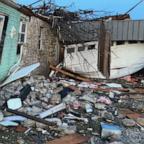Rite Aid stock: It could use some tonic
— -- A: Rite Aid is one of those stocks investors assume must be a winner.
Given the skyrocketing costs of pharmaceuticals, aging population and increased use of drugs to treat conditions, you'd think drugstore Rite Aid would be in perfect shape. And while the recession could hurt companies that make expensive electronic gadgets or home products, most consumers buy drugs in good times or bad.
Great, theory, but that's not the case. Rite Aid stock has been a big disappointment. Shares of the company have declined 80% the past year, which makes the 38% decline by the Standard & Poor's 500 index look good.
Readers keep asking about Rite Aid, and my suggestion has consistently been to avoid it.
But since it's been a while since we've put Rite Aid through the four steps we consider at Ask Matt, we might as well run it again:
Step 1: Risk vs. reward. When you take a risk on a stock, you want to make sure you're properly rewarded. Downloading Rite Aid's trading history back to 1980, we see the company generated an average annual compound rate of price depreciation of 6%. Yes, you read that right. Depreciation. Had you invested in this company in 1980, you would have lost 6% of your money on average each year. That's pretty ugly if you consider the S&P 500 stock index posted a 10.6% average annual return in the same time frame, says IFA.com.
And if you owned Rite Aid, you accepted higher risk — standard deviation — of 53.5 percentage points. That's much higher than the 15.3 percentage point risk of the S&P 500 during the period. So in taking that loss, you also took on tremendous risk. You don't need to be a financial guru to know this isn't a very good tradeoff.
Step 2: Measure the stock's discounted cash flow. Some investors decide if a stock is pricey by comparing its current price to the present value of its expected cash flows. It's a complicated analysis made simple with a system from NewConstructs. When we run Rite Aid's stock, we find it's rated "dangerous." In other words, even after the collapse in the stock, the price is still greater than what the company is expected to generate in cash over its lifetime. Using this analysis, it would appear Rite Aid is better left alone.




